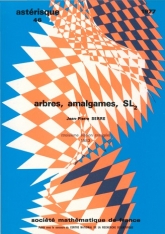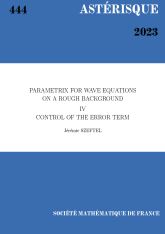
- Consulter un extrait
- Année : 1977
- Tome : 46
- Format : Électronique, Papier
- Langue de l'ouvrage :
Français - Nb. de pages : 198
- ISBN : ISBN-13 978-2-85629-466-6
These Notes are based on a course given at the College de France in 1968/69 ; they have been written with the collaboration of Hyman BASS. There are two Chapters. In Chapter I, we consider a group $G$ acting on a tree $X$ , and we use information on the quotient graph G\X and on the stabilizers of the vertices and the edges, to get properties of $G$. For instance : a) when the stabilizers are all trivial (i.e. when $G$ acts freely), then $G$ is free (§ 3) ; b) when G\X is an edge $G$ is an amalgam (§ 4). In the general case (which is due to Bass), $G$ can be described as the fundamental group of a "graph of groups" (§ 5). Chapter II is concerned with the "tree of $SL_{2}$" over a local field. This tree is the simplest example of the affine buildings defined by Bruhat-Tits for arbitrary semi-simple groups. It is the ultrametric analogue of the upper-half plane, and can be used in a similar way to study arithmetic groups (§ 2). Other applications are given Introduction Chapter in § 1, for instance to theorems of Ihara and Nagao.


